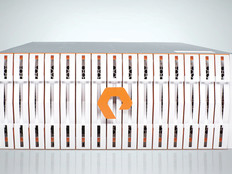Weighing Your Cloud Storage Options
Where do clouds fit in with high-availability storage? As with any emerging technology, the answer depends on understanding the options that align with an organization’s needs.
Private clouds offer the clearest advantages for storage infrastructures. They alleviate fears about security and data leakage because information remains within the organization’s own data centers. At the same time, IT managers can easily manage virtualized storage and server resources as a centralized cloud resource.
Public clouds are a bit trickier. There’s latency inherent in WANs, which makes public clouds poor choices for primary storage systems or for replication solutions where huge volumes of data need to traverse network pipes.
But that doesn’t mean public clouds can’t or shouldn’t play a role. They can serve as low-maintenance and sometimes economical options for data replication solutions involving individual files or small data sets. And they’re an especially attractive alternative for organizations without multiple locations.
A third option is a hybrid model, where organizations keep the most critical data within the bounds of a private cloud, but take advantage of public clouds for less valuable or archival information.








